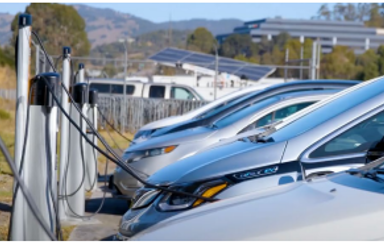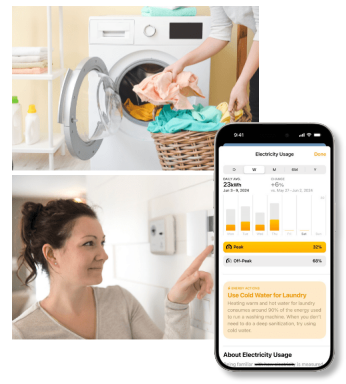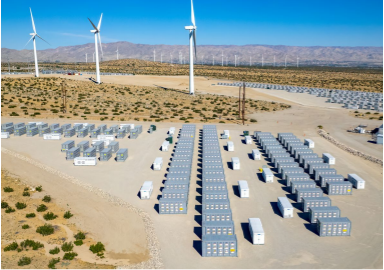As PG&E works toward a net zero grid by 2040, the integration of new clean supply and energy storage technologies into the existing energy system is critical. To support electrification at both commercial and residential locations, PG&E is focused on reducing the financial burden and speeding up timelines through cost-effective, scalable solutions, including those that either bypass the need for extensive electrical upgrades or enable the orchestration of energy loads to prevent transformer overloads.
 |
PS2. Avoiding installation delays for public and fleet charging due to capacity constraints |
PG&E is deploying systems that are able to dynamically limit power flow to public and fleet charging based on system constraints; however, not all existing charging equipment has the ability to respond to PG&E's signals by modulating load within these dynamic constraints or by utilizing alternate sources (e.g., storage) to meet load. |
|
|
Why is this important? PG&E is actively supporting fleet electrification, but capacity constraints in the electrical system can result in delays while necessary upgrades are completed. To address this, PG&E is deploying systems that allow dynamic load management within the limits of the current infrastructure. These systems require charging equipment to respond to signals that adjust power usage as capacity fluctuates. As we scale public and fleet EV charging, we will need circuits that are capable of handling the load of large-scale charging infrastructure. We may also need to more dynamically manage these circuits which will require public and fleet charging customers who can operate within dynamic constraints. Both elements are critical to help California achieve its goal of transitioning 100% of medium- and heavy-duty vehicles to zero-emission vehicles (ZEVs) by 2045. |
|
|
What is the current state and its primary limitations? PG&E is in the process of deploying dynamic systems to manage capacity on constrained circuits, allowing for the connection of new EV charging infrastructure (both DCFC and L2) while larger-scale upgrades are being implemented. To fully benefit from this approach and connect to constrained circuits sooner, all charging equipment must be capable of flexibly adjusting power draw as system conditions change. Additionally, in situations where grid power is restricted or unavailable, alternative energy sources such as storage may be needed to meet demand during vehicle charging.
Primary limitations include:
|
|
|
What are the desired outcomes from R&D? Novel technologies, including AI/ML, to:
|
|
 |
PS3. Detecting and forecasting customer-led appliance electrification to support zonal electrification efforts |
| PG&E currently lacks the tools and visibility to monitor, predict, and respond to emerging patterns of behind-the-meter electrification, such as untracked water heater replacements or end-of-life transitions from gas to electric appliances. These customer-driven changes create invisible electric load growth and gas decline that challenge grid capacity planning, risk missed opportunities to equitably distribute electrification benefits and limit the effectiveness of zonal electrification efforts. To ensure reliable, equitable, and cost-effective service, PG&E needs dynamic, data-informed tools to identify when, where, and what customers are electrifying (or are about to), especially when those changes are not initiated through utility programs. | |
Why is this important?
|
|
| What is the current state and its primary limitations?
The utility’s existing planning and customer engagement frameworks are not equipped to capture behind-the-meter, appliance-level changes in a timely or predictive manner.
Primary limitations include:
|
|
What are the desired outcomes from R&D?
|
|
 |
PS4. Enhancing broad customer resiliency and grid benefits with utility-owned batteries |
| Since 2020, PG&E has offered back-up power battery programs to address the frequent outages affecting thousands of customers annually as a result of the Community Wildfire Safety Program, which includes planned Public Safety Power Shutoff (PSPS) events and unplanned Enhanced Powerline Safety Setting (EPSS) outages. PG&E’s portfolio of battery programs provide both portable and permanent batteries and both fully subsidized systems and rebate offerings – in all cases, the customer ultimately owns and operates the equipment. These models provide resiliency to the impacted customer, but make it difficult to capture additional grid benefits that permanent batteries can provide for the benefit of all customers (including non-participating customers). PG&E plans to develop a program offering utility owned and operated back-up power equipment that will benefit both impacted customers and non-participants and is seeking technical solutions from the market. However, without novel technologies, the battery back-up program will be too expensive to realize the full potential of this model. | |
| Why is this important?
Since 2020, PG&E has offered back-up power battery programs to address the frequent outages affecting thousands of customers annually as a result of the Community Wildfire Safety Program, which includes planned Public Safety Power Shutoff (PSPS) events and unplanned Enhanced Powerline Safety Setting (EPSS) outages. PG&E aims to provide backup power resources for these customers while also gaining additional benefits from these resources, such as grid benefits and load management opportunities that would benefit all customers, not just those impacted by outages. |
|
| What is the current state and its primary limitations?
PG&E is providing single permanent battery installations at roughly 13 to 15 kWh, not paired with solar. These installations offer partial mitigation for three to six-hour EPSS outages.
Primary limitations include:
|
|
What are the desired outcomes from R&D?
|
|
Submit Application
Please fill out the entirety of the form below to the best of your ability.
Browse Ideas
Review your submitted projects.
|
Terms and Conditions | Contact Us: noreply@brightidea.com |



